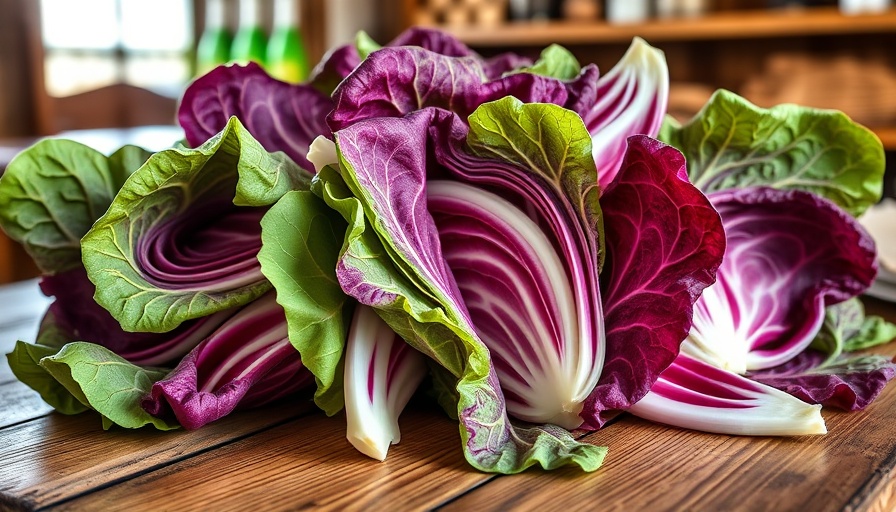
Discover the Unique Delights of Radicchio
Radicchio, often mistaken for a mere cabbage due to its striking color and compact shape, is a vegetable that deserves more attention among American gardeners. This flavorful green, scientifically known as Cichorium intybus var. foliosum, has a rich history rooted in Italian cuisine, where its distinct bitterness is celebrated rather than shunned.
Understanding the Botanical Roots
Not just a culinary marvel, radicchio is a biennial plant, although it's usually treated as an annual in gardens. This means that while it completes its life cycle in two years, most gardeners harvest it in the first year for its tender leaves. When left to grow unabated, it blooms in the second year, producing seeds and subsequently, the plant dies.
Essential Growing Conditions
Growing radicchio can appear daunting to some; however, with the right tools and techniques, it can be a rewarding endeavor. This plant thrives in USDA hardiness zones 4 to 10, making it suitable for diverse climates across the United States. Ideally, radicchio requires:
- Soil: Organically-rich loam that drains well, with a pH between 6.5 and 7.5
- Sunlight: Full sun, though it can tolerate partial shade
- Water: Moderate to high, ensuring that the soil remains moist but not soggy.
Planting Tips for Success
For the best results, sow radicchio seeds about 1/4 inch deep in early spring or late summer for fall harvests. Space the seeds roughly 8 inches apart within rows that are 12 inches apart. With a maturation time ranging from 55 to 90 days, timing is crucial. Consistently monitor the plants for signs of stress, particularly during hot spells or dry spells.
Varietal Choices for Every Palate
When considering which radicchio variety to grow, there are several noteworthy options to choose from:
- Chioggia: This variety features welts of red and white and is widely popular for its mild, slightly bitter flavor.
- Treviso: Known for its elongated shape and striking red color, this variety yields tender, crisp leaves perfect for salads.
- Castelfranco: A milder choice, Castelfranco adds visual interest with its creamy, variegated leaves.
Combatting Pests and Diseases
Radicchio is not without its challenges, particularly concerning pests. Cabbage worms and aphids can be pesky intruders. Employing natural deterrents, such as introducing beneficial insects or using insecticidal soap, can reduce pest populations effectively.
The Art of Harvesting
When the heads of radicchio have formed, it's time to harvest. This typically occurs when they reach about 12 inches in diameter. Using a sharp knife, cut the radicchio at the base, leaving some leaves at the root to foster regrowth if there’s time left in the season.
Preserving the Bounty
Radicchio can be preserved in various ways to extend its life beyond the garden. For those interested in canning or pickling, a simple approach involving vinegar, spices, and water can yield delectable results. Alternatively, freeze blanched radicchio for use in stir-fries or soups.
Cooking with Radicchio: Culinary Inspirations
The potential uses for radicchio extend far beyond salads. Its bold flavor complements many dishes, such as:
- Risotto: A warm, comforting dish where the radicchio’s bitterness balances the creaminess.
- Grilled Dishes: Pair grilled radicchio with BBQ for a delightful contrast.
- Soups: Incorporate chopped radicchio into your favorite soup recipes for added richness and depth.
Empower Yourself to Grow
As someone who is keen on exploring the benefits of home gardening, planting radicchio offers a deeper connection to your food. The process isn’t merely about cultivation; it’s a journey of understanding and appreciation for the art of growing.
Radicchio not only enhances your dietary variety but also contributes to a sustainable lifestyle through self-sufficiency. Are you ready to embrace the challenges and rewards of gardening?
 Add Row
Add Row  Add
Add 




Write A Comment